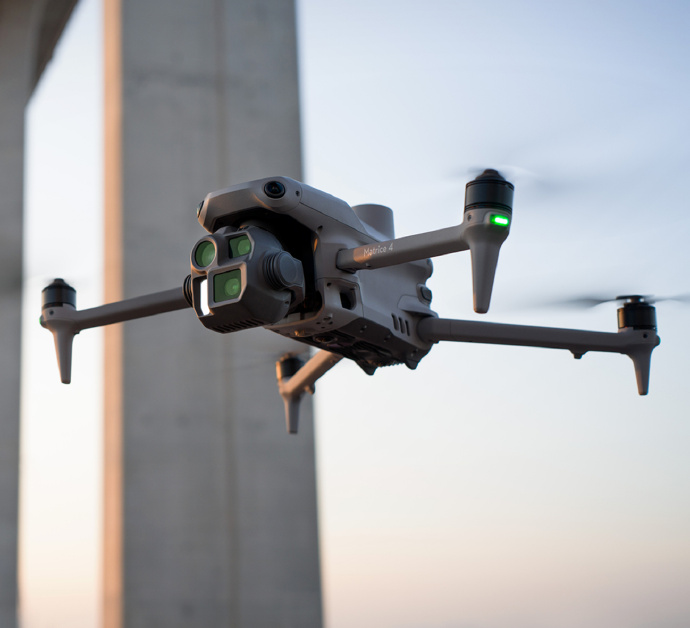Unmanned aerial vehicles, commonly known as drones, have revolutionized the way we conduct surveillance operations. Drones equipped with thermal imaging cameras offer a significant advantage in various fields, from search and rescue missions to security patrolling and wildlife monitoring. Let’s delve into the world of drones with thermal imaging cameras and explore their capabilities, applications, and the benefits they bring to users worldwide.
Thermal imaging technology allows these drones to detect heat signatures emitted by objects, animals, or humans, even in complete darkness. This is particularly useful for applications where visual confirmation is challenging due to poor lighting conditions or obstructions. Security agencies utilize drones with thermal imaging cameras to monitor large areas, detecting unauthorized access or suspicious activities at any time of the day or night. Similarly, search and rescue teams can locate missing persons quickly in vast terrains by identifying heat patterns from those in distress.
Applications Across Various Industries
Drones with thermal imaging cameras are not limited to just security and rescue operations. In agriculture, these drones can assess crop health by identifying areas that require irrigation or are affected by disease. The technology analyzes temperature variations within the field, providing data that helps farmers optimize their resources efficiently. Additionally, drones are deployed in pipeline monitoring, identifying leaks or anomalies by detecting changes in temperature that could indicate breaks or malfunctions.
Wildlife conservation is another area where thermal imaging drones have shown immense potential. Researchers use these drones to monitor animal populations and minimize human interference. The ability to detect animals based on their heat signatures enables researchers to gather essential data about migration patterns and habitat usage without disturbing the wildlife. This application not only aids in conservation efforts but also enhances our understanding of diverse ecosystems.
Advantages Over Traditional Surveillance Methods
Traditional surveillance methods depend largely on visible light cameras, which may fall short in low-light or obscured environments. Thermal imaging drones, however, transcend these limitations by providing real-time footage that reveals more than what meets the eye. This increased capability reduces the need for physical patrolling, thus lowering costs associated with manpower and equipment. Drones can cover larger areas in less time, providing a comprehensive overview that static cameras or manual inspections cannot match.Drones with thermal imaging cameras also offer increased safety for operators by limiting the need for direct involvement in dangerous scenarios. Whether it’s investigating high-crime areas or inspecting hazardous industrial sites, an operator can maintain a safe distance while the drone captures essential data. This decreases the risk factors involved for personnel, ensuring operations proceed without compromising safety.Key Considerations When Choosing DronesWhen selecting a drone equipped with a thermal imaging camera, several factors must be weighed to ensure optimal performance and utility. Camera resolution, drone battery life, flight range, and software compatibility are crucial components that determine the drone’s effectiveness in various missions. Higher resolution cameras provide clearer images, whereas longer battery life and flight range enable more extensive surveillance. Software integration allows data analysis and reporting, offering users the ability to make informed decisions based on the drone’s findings.
Ensuring proper training for operators is critical as well. Utilizing thermal imaging technology requires skill and understanding to interpret data accurately. Providing training programs will maximize drone benefits, ensuring the technology is leveraged to its full potential.
Exploring Future Horizons
As technology evolves, drones with thermal imaging cameras are bound to become even more versatile and sophisticated. Innovations in camera technology and drone design will further expand their applications, enhancing performances across industries. Sustainable energy solutions could also extend flight times, making them eco-friendly options for prolonged operations.Frequently Asked Questions:
Q1: Can thermal imaging drones see through walls?
A1: No, thermal imaging technology detects heat signatures and cannot penetrate solid structures like walls.
Q2: What is the typical range for a drone with a thermal camera?
A2: While the range varies by model, most drones can efficiently operate within a range of several kilometers from the operator.
Q3: Are thermal drones affected by weather conditions?
A3: Extreme weather can impact drone operations, but thermal cameras are generally effective during rain or fog, although performance may vary.Thermal imaging capabilities expand drone functionalities, creating new opportunities for various fields. Embrace these advancements to elevate surveillance and operational tasks with drones outfitted with cutting-edge thermal technology.